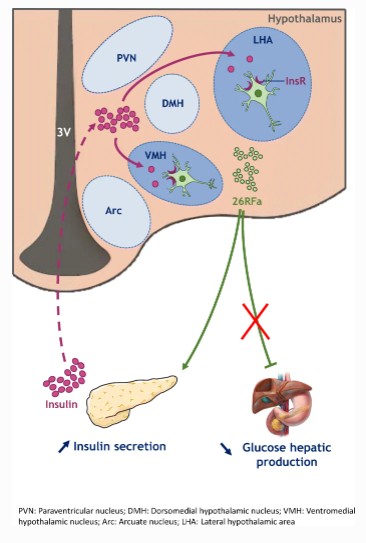The 26RFa (QRFP)/GPR103 neuropeptidergic system in mice relays insulin signalling into the brain to regulate glucose homeostasis – published online 27/04/2022

Mouna El Mehdi, Saloua Takhlidjt, Mélodie Devère, Arnaud Arabo, Marie-Anne Le Solliec, Julie Maucotel, Alexandre Bénani, Emmanuelle Nedelec, Céline Duparc, Benjamin Lefranc, Jérôme Leprince, Youssef Anouar, Gaëtan Prévost, Nicolas Chartrel, Marie Picot
The last two decades provided evidence that the central nervous system contributes significantly to the maintenance of glucose homeostasis in the body. However, the molecular mechanisms and neuronal networks involved in this regulation remain largely unknown. In this issue, El Mehdi et al (https://doi.org/10.1007/s00125-022-05706-5) report that 26RFa (also referred to as pyroglutamilated RFamide peptide [QRFP]), a neuropeptide previously found to be involved in the peripheral regulation of glycaemia and the control of feeding behaviour, improves glucose tolerance in mice when administrated centrally. The authors also show that insulin targets the hypothalamic 26RFa-expressing neurons, increasing the peripheral secretion of insulin in a hyperglycaemic context. The authors conclude that these findings have identified a key relay for the central regulation of glucose metabolism by insulin and an entirely new mechanism contributing to overall glucose homeostasis in the body, which may represent a new target for the treatment of diabetes.
All News
